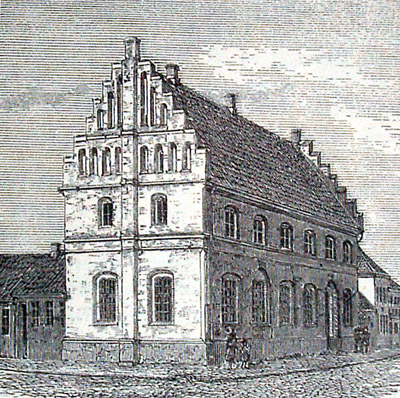|
SkarpĂĄker Stone
The Skarpåker Stone, designated by Rundata as Sö 154, is a Viking Age memorial runestone that originally was located in Skarpåker, Nyköping, Sörmland, Sweden. It dates to the early eleventh century. Description The runestone was discovered in 1883 in a field at Skarpåker, but in 1883 was moved to Lindö and then moved to its current location in that city in 1928. The Skarpåker Stone is 1.8 meters in height and notable for a skaldic younger futhark inscription in two, nearly-identical lines. The eschatology of the verse, "the Earth shall be rent, and the heavens above", apparently expressing a father's devastation at the loss of his son, may be compared to the father's lament in the ''Sonatorrek''. It also evokes the catastrophic end of the world in Germanic mythology, described in the ''Poetic Edda'' as Ragnarök and also alluded to in the ''Muspilli''. The phrase "heavens above" or "high heaven" (literally "up-heaven") is used in three existing skaldic poems, in Old Hi ... [...More Info...] [...Related Items...] OR: [Wikipedia] [Google] [Baidu] |
Ribe
Ribe () is a town in south-west Jutland, Denmark, with a population of 8,367 (2025). It is the seat of the Diocese of Ribe. Until 1 January 2007, Ribe was the seat of both a surrounding municipality and county. It is now part of the enlarged Esbjerg Municipality in the Region of Southern Denmark. It is the oldest town in Denmark. History The town was a center of commercial activity in the early 8th century, and this may have originated with royal influence. Coins may have been struck there in 720. Whichever king was involved in the digging of the Kanhave Canal may have been involved in the establishment of Ribe also. Trade contacts were mostly with Frisia and England. Of the over 300 sceatas found in Denmark, 216 come from in or around Ribe, most of them were of the Frisian Wodan type, and these were likely minted in Ribe in the early eighth century. The Ancient Diocese of Ribe was established in 948 with the consecration of Leofdag of Ribe as its first bishop. Early in t ... [...More Info...] [...Related Items...] OR: [Wikipedia] [Google] [Baidu] |
Viking Runestones
The Viking runestones are runestones that mention Scandinavians who participated in Vikings, Viking expeditions. This article treats the runestone that refer to people who took part in voyages abroad, in western Europe, and stones that mention men who were Viking warriors and/or died while travelling in the West. However, it is likely that all of them do not mention men who took part in pillaging. The inscriptions were all engraved in Old Norse with the Younger Futhark. The runestones are unevenly distributed in Scandinavia: Denmark has 250 runestones, Norway has 50 while Iceland has none. Sweden has as many as between 1,700 and 2,500 depending on definition. The Swedish district of Uppland has the highest concentration with as many as 1,196 inscriptions in stone, whereas Södermanland is second with 391. The largest group consists of 30 stones that mention England, and they are treated separately in the article England runestones. The runestones that talk of voyages to eastern Eu ... [...More Info...] [...Related Items...] OR: [Wikipedia] [Google] [Baidu] |
Södermanland Runic Inscription 158
Södermanland Runic Inscription 158 or Sö 158 is the Rundata catalog number for a Viking Age memorial runestone located in Österberga, which is one kilometer southwest of Ärsta and three kilometers southwest of Runtuna, Södermanland County, Sweden, and in the historic province of Södermanland. The inscription includes an image of a ship and uses same-stave bind runes to commemorate a man described as being a thegn. Description This runestone was initially noted during the Swedish surveys of runestones in the late 17th century, and a drawing of the inscription made by Johan Göransson was published under the name Bautil in 1750. pp. 195-197. The runestone was then lost, but was rediscovered in 1951 near a farmhouse by Claes Widén and moved to its current location in 1984. The stone is made of granite and is 1.6 meters in height. The runic inscription consists of runic text carved on a serpent which arches over the image of a ship. Other runic inscriptions from the Viking Age ... [...More Info...] [...Related Items...] OR: [Wikipedia] [Google] [Baidu] |
Östergötland Runic Inscription MÖLM1960;230
Östergötland Runic Inscription MÖLM1960;230 or Ög MÖLM1960;230 is the Rundata catalog number for a memorial runestone that is located near a church in Törnevalla, which is 2 kilometers east of Linghem, Sweden, Linghem, Östergötland County, Sweden, which was in the historic province of Östergötland. The runestone has an inscription which refers to a Viking Age mercantile guild and depicts a ship. Description Runestone Ög MÖLM1960;230 was rediscovered in the base of a church tower in 1960. Before the historic significance of runestones was understood, they were often reused as building materials for roads, churches, and other buildings. After being repaired, it was raised outside of the church. The runic inscription on this granite stone, which is 2.4 meters in height, consists of text in the younger futhark within an arching text band that is under a depiction of a ship. The inscription is classified as being carved in runestone styles, runestone style RAK, which is the ... [...More Info...] [...Related Items...] OR: [Wikipedia] [Google] [Baidu] |


